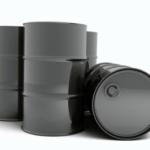
The Twilight of Group I: How changes in lubricant formulations are driving fundamental shifts in base oil supply and pricing
The move toward lower viscosity, higher VI, lower volatility automotive engine oils demanded by modern vehicles per U.S. ILSAC GF-5 (and, prospectively, GF-6) and European ACEA standards has caused blenders to move to higher-performance Group II+ and Group III, and away from Group I, base oil stocks as they reformulate their recipes. While the initial impacts of these reformulation trends are being felt in the OECD countries, global advancements in engine oil formulations are inexorable.









